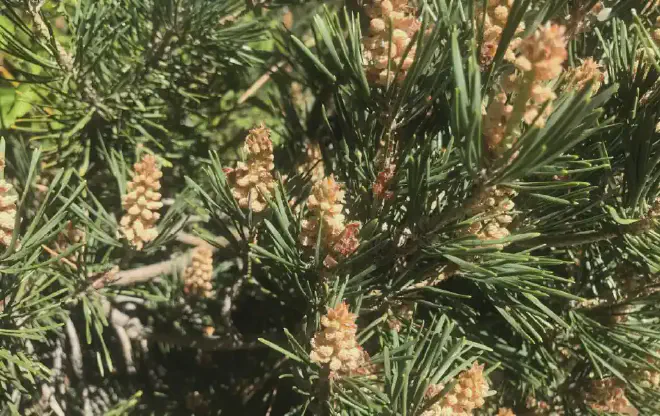

Imagine trying to tell identical twins apart just by looking at their fingerprints, wrote Katherine Egan Bennett. That’s how challenging it can be for scientists to distinguish the tiny powdery pollen grains produced by fir, spruce and pine trees.
But a new artificial intelligence system developed by researchers at The University of Texas at Arlington, the University of Nevada and Virginia Tech is making that task a lot easier—and potentially bringing big relief to allergy sufferers.

“With more detailed data on which tree species are most allergenic and when they release pollen, urban planners can make smarter decisions about what to plant and where,” said Behnaz Balmaki, assistant professor of research in biology at UT Arlington and coauthor of a new study published in the journal Frontiers in Big Data with Masoud Rostami from the Division of Data Science at UTA. “This is especially important in high-traffic areas like schools, hospitals, parks and neighborhoods. Health services could also use this information to better time allergy alerts, public health messaging and treatment recommendations during peak pollen seasons.”
“Even with high-resolution microscopes, the differences between pollens are very subtle,” Dr. Balmaki said. “Our study shows deep-learning tools can significantly enhance the speed and accuracy of pollen classification. That opens the door to large-scale environmental monitoring and more detailed reconstructions of ecological change. It also holds promise for improving allergen tracking by identifying exactly which species are releasing pollen and when.”
Balmaki adds that the research could also benefit agriculture.
“Pollen is a strong indicator of ecosystem health,” she said. “Shifts in pollen composition can signal changes in vegetation, moisture levels and even past fire activity. Farmers could use this information to track long-term environmental trends that affect crop viability, soil conditions or regional climate patterns. It’s also useful for wildlife and pollinator conservation. Many animals, including insects like bees and butterflies, rely on specific plants for food and habitat. By identifying which plant species are present or declining in an area, we can better understand how these changes impact the entire food web and take steps to protect critical relationships between plants and pollinators.”
For this study, the team examined historical samples of fir, spruce and pine trees preserved by the University of Nevada’s Museum of National History. They tested those samples using nine different AI models, demonstrating the technology’s strong potential to identify pollen with impressive speed and accuracy.
“This shows that deep learning can successfully support and even exceed traditional identification methods in both speed and accuracy,” Balmaki said. “But it also confirms how essential human expertise still is. You need well-prepared samples and a strong understanding of ecological context. This isn’t just about machines—it’s a collaboration between technology and science.”
For future projects, Balmaki and her collaborators plan to expand their research to include a wider range of plant species. Their goal is to develop a comprehensive pollen identification system that can be applied across different regions of the United States to better understand how plant communities may shift in response to extreme weather events.
-
The paper Deep learning for accurate classification of conifer pollen grains: enhancing species identification in palynology was published in Frontiers in Big Data
-
COI Statement
The authors declare that the research was conducted in the absence of any commercial or financial relationships that could be construed as a potential conflict of interest. The author(s) declared that they were an editorial board member of Frontiers, at the time of submission. This had no impact on the peer review process and the final decision. The author(s) declare that no financial support was received for the research, authorship, and/or publication of this article.

